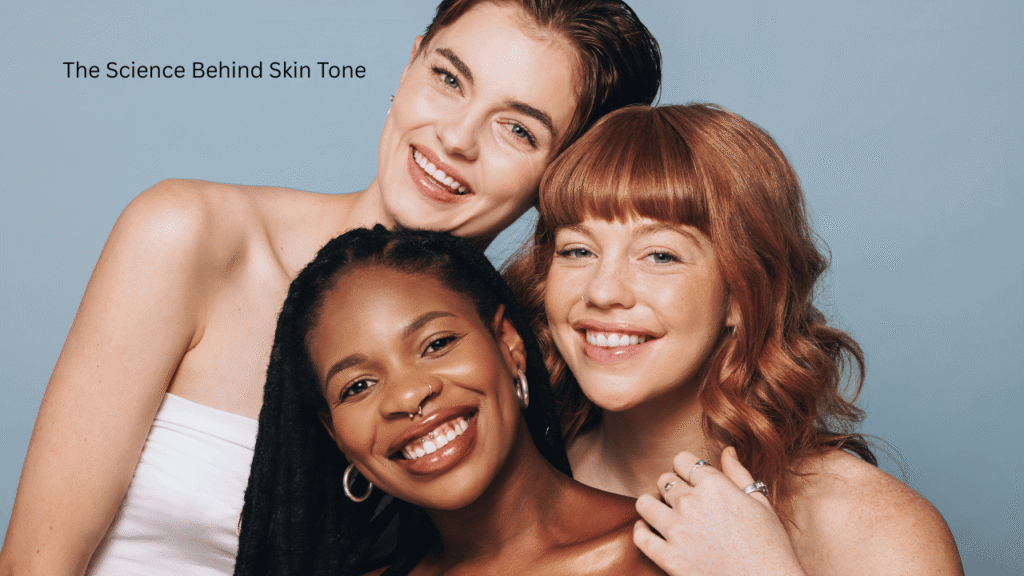Complexion Theory of Fashion: Enhancing Personal Style Through Skin Tone Understanding
Complexion Theory of Fashion: Fashion is more than just clothing; it’s a form of self-expression, a reflection of culture, and a medium through which individuals communicate their identity. One of the most influential factors in personal style is skin tone. Understanding how complexion interacts with color can transform one’s wardrobe choices, leading to enhanced confidence and a more harmonious appearance. This concept, often referred to as the “Complexion Theory of Fashion,” delves into the relationship between skin tone and color selection, offering insights into how individuals can curate their wardrobes to complement their natural coloring.
The Science Behind Skin Tone

Skin tone is determined by the amount and type of melanin in the skin, which is influenced by genetic factors and environmental exposure to sunlight. It is commonly categorized into three main undertones:
- Warm Undertones: Characterized by yellow, peach, or golden hues in the skin.
- Cool Undertones: Exhibited through pink, red, or blue hues.
- Neutral Undertones: A balance of both warm and cool hues.
Understanding one’s undertone is crucial in selecting colors that enhance natural beauty and create a cohesive look.
The Four-Season Color Analysis

The Four-Season Color Analysis is a method that categorizes individuals into four groups—Spring, Summer, Autumn, and Winter—based on their skin tone, eye color, and hair color. Each season corresponds to a specific palette of colors that harmonize with an individual’s natural coloring.
- Spring: Individuals with warm undertones, light skin, and often light hair. They look best in clear, warm colors like peach, coral, and turquoise.
- Summer: Those with cool undertones and light to medium skin. Their ideal colors are soft, muted tones such as lavender, rose, and powder blue.
- Autumn: Characterized by warm undertones and medium to dark skin. Rich, earthy colors like olive, mustard, and burnt orange complement this group.
- Winter: Individuals with cool undertones and dark skin. They shine in bold, high-contrast colors like emerald green, royal blue, and pure white.
This seasonal categorization helps individuals select colors that naturally enhance their complexion, leading to a more flattering and cohesive wardrobe.
The Twelve-Season Color System

Building upon the Four-Season model, the Twelve-Season Color System offers a more nuanced approach by introducing subcategories within each season. This system considers variations in depth, intensity, and temperature of colors to provide a more personalized palette.
For example, within the Winter category, there are subcategories like:
- Cool Winter: Individuals with cool undertones and high contrast between hair, skin, and eyes. They look best in icy tones and jewel colors.
- Deep Winter: Those with dark hair and eyes, and a cool undertone. Rich, deep colors like charcoal, navy, and burgundy are flattering.
This expanded system allows for a more tailored approach, accommodating the diverse range of human complexions.
Color Theory in Fashion

Color theory plays a pivotal role in fashion, guiding the selection of colors that harmonize with an individual’s complexion. Key principles include:
- Complementary Colors: Colors opposite each other on the color wheel, such as blue and orange, create vibrant contrasts that can be striking when paired together.
- Analogous Colors: Colors next to each other on the color wheel, like blue, blue-green, and green, offer a harmonious and serene look.
- Monochromatic Colors: Variations of a single hue, such as light blue, medium blue, and dark blue, provide a cohesive and sophisticated appearance.
By understanding these principles, individuals can create outfits that enhance their natural coloring and express their personal style.
Practical Applications of Complexion Theory

Implementing the Complexion Theory of Fashion involves more than just selecting the right colors; it encompasses a holistic approach to personal style. Practical applications include:
- Wardrobe Curation: Building a wardrobe based on a personalized color palette ensures that all pieces complement each other, making it easier to mix and match outfits.
- Makeup Selection: Choosing makeup shades that align with one’s undertone can enhance features and create a harmonious look.
- Accessory Coordination: Selecting accessories in colors that complement the outfit and the individual’s coloring can elevate the overall appearance.
By integrating these practices, individuals can create a cohesive and flattering personal style.
Cultural and Societal Implications

The understanding and application of complexion theory in fashion also have cultural and societal implications. Historically, certain skin tones have been idealized over others, leading to colorism and societal biases. The fashion industry has often perpetuated these standards, favoring lighter skin tones and marginalizing darker ones.
However, there has been a significant shift towards inclusivity and diversity in recent years. Brands and designers are increasingly recognizing the importance of representing a wide range of skin tones, leading to more inclusive fashion lines and campaigns. This shift not only promotes diversity but also empowers individuals to embrace their natural coloring and express their unique identities.
Conclusion
The Complexion Theory of Fashion offers a framework for individuals to understand how their skin tone interacts with color, leading to more informed and flattering wardrobe choices. By embracing this theory, individuals can enhance their personal style, boost their confidence, and contribute to a more inclusive and diverse fashion landscape. As the industry continues to evolve, the celebration of all skin tones and the understanding of their unique beauty will remain at the forefront of fashion innovation.






